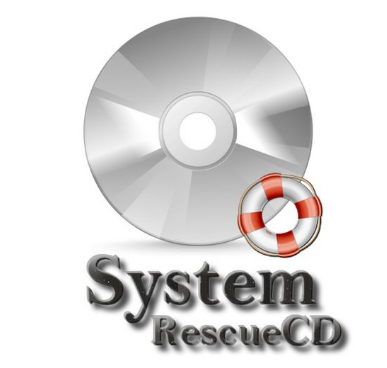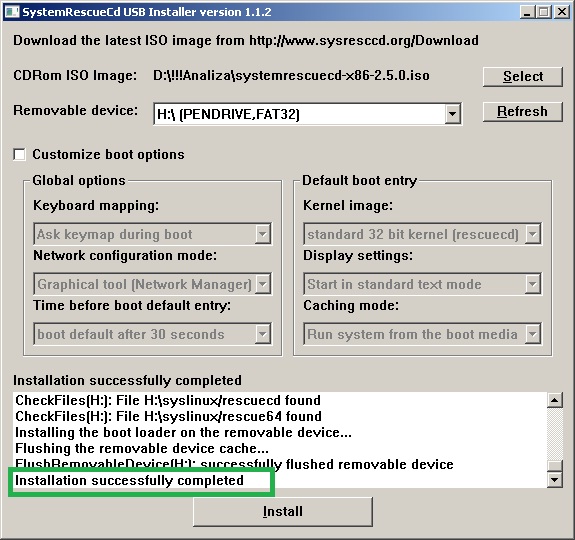

- #INSTALL SYSTEMRESCUECD ON USB HOW TO#
- #INSTALL SYSTEMRESCUECD ON USB INSTALL#
- #INSTALL SYSTEMRESCUECD ON USB FULL#
Step-01: Mount the working partition % mkdir /mnt/custom Please, post questions about the customization in this section of the forums: To add new packages to your customized rescuecd, you need sysresccd-1.1.0 or newer. All files of /dev/sda1/customcd/ will be lost! You must use the name /mnt/customcd since the script expects that. If you have an old version of a personalizedĬDRom in this directory, make a backup. Files located in other directories won't beĪffected by this script. This procedure makes the directory customcd at the If you use the docache boot option, the original SystemRescueCd disc must be mounted when you run the first step (extract) of the script. Mount -t ext2 -o loop fsimage /mnt/custom Only have a FAT partition available, you can create a virtual linuxįilesystem image inside the FAT partition:ĭd if=/dev/zero of=fsimage bs=1M count=850 It must really be a linux filesystem, because other filesystem, such asįAT, NTFS don't supports symbolic links and files permissions. All necessary files are included.Īssume that the /dev/sda1 partition is formatted for linux This means you must burn an official SystemRescueCd version, boot fromĪn official version, and then make your own version. Personalization is processed from the CDRom system with a script. Basically, you first compiles a new kernel, and then you make a customized CD using the new kernel and its modules.
#INSTALL SYSTEMRESCUECD ON USB HOW TO#
You may also be interested in a procedure which explains how to build a SystemRescueCd with your own kernel. Partition in order to avoid problems with the squashfs step in the If you don't have 128 MB of RAM, and at leastĨ50 MB free on your hard disk, it will fail. This operation requires a large amount of memory (both RAM and If you add additional items you may need more space. You will need a recent official version of the SystemRescueCd CDRom,Īnd a partition with read-write access from within linux, with at leastĨ50 MB. The goal is to produce a new ISO image file, with an updated sysrcd.dat. If you need a kernel improvement, please submit requests in It's also possible to add dataįiles, in order to have everything on the CDRom (data and system files
#INSTALL SYSTEMRESCUECD ON USB FULL#
ForĮxample, you can add script files that make a full backup of a server, This means you can add files to the sysrcd.datĬompressed image file, which is the file system of SystemRescueCd.

#INSTALL SYSTEMRESCUECD ON USB INSTALL#
6.4 Step-04d: How to install a new package.6.3 Step-04c: Chroot in the sysresccd environment.6.2 Step-04b: Download and extract a recent portage snapshot.6.1 Step-04a: Requirements to compile programs.6 Step-04: Add your own packages (optional).4 Step-02: Extract the current files from the sysrcd.dat image.


 0 kommentar(er)
0 kommentar(er)
